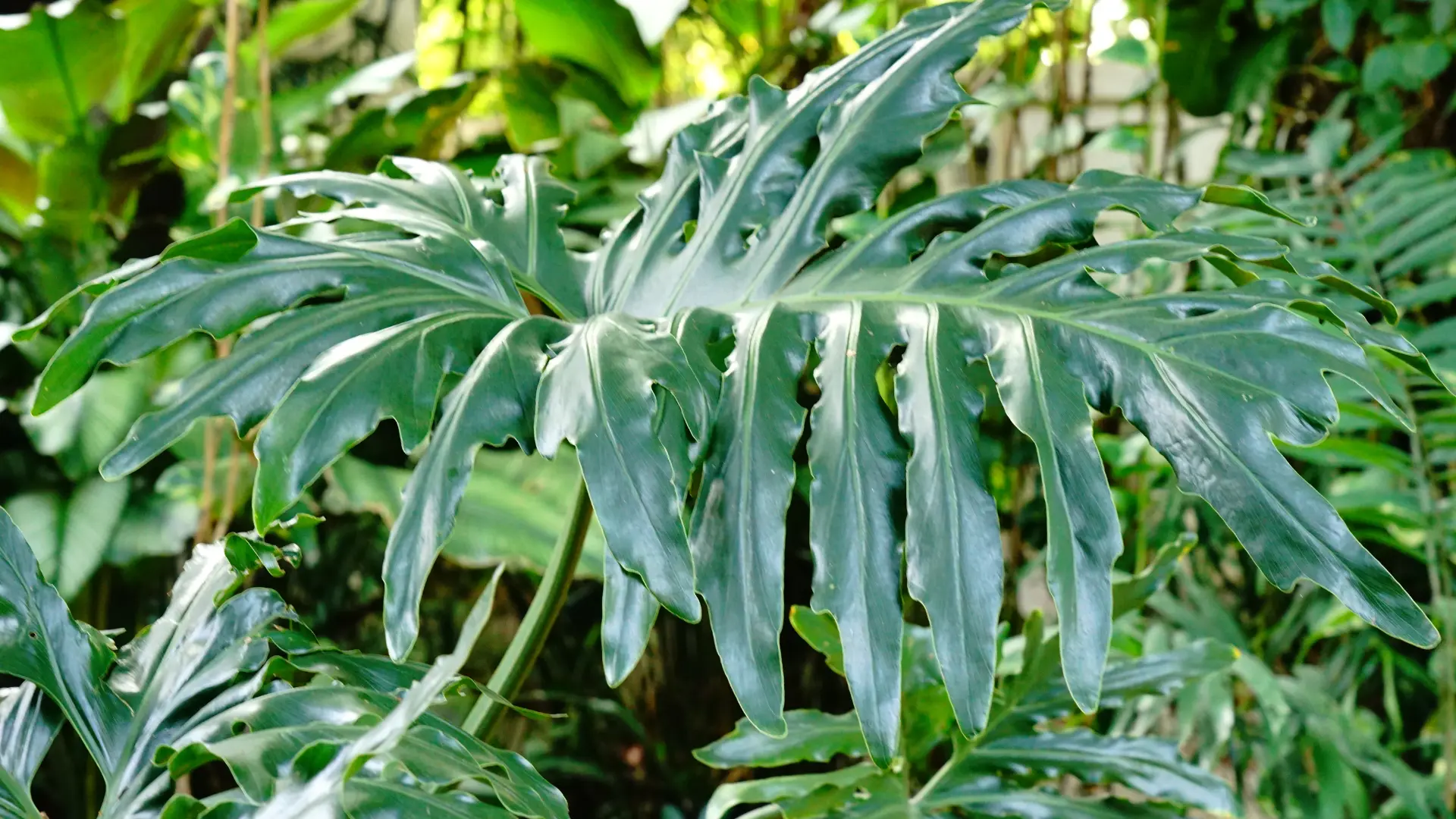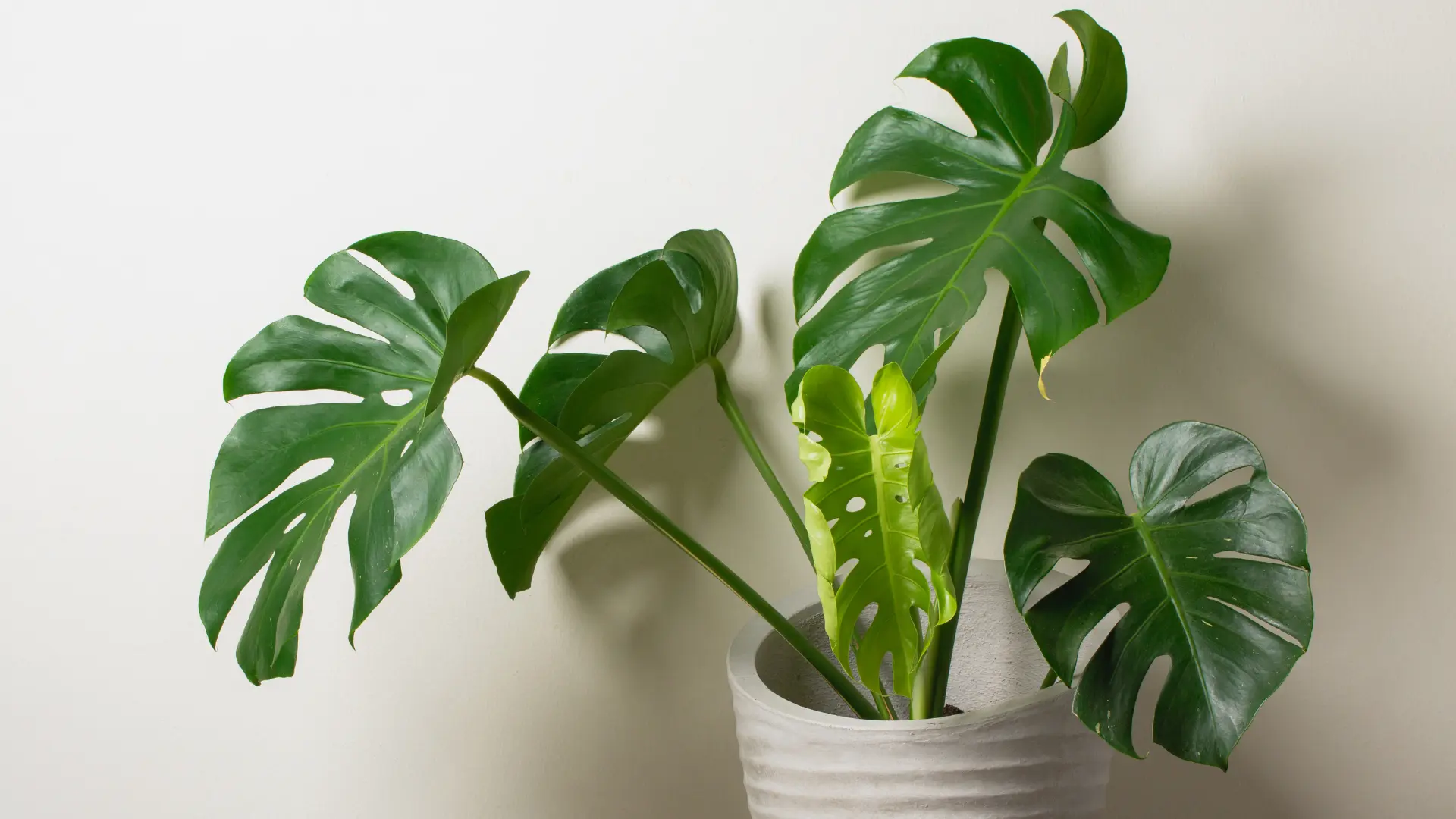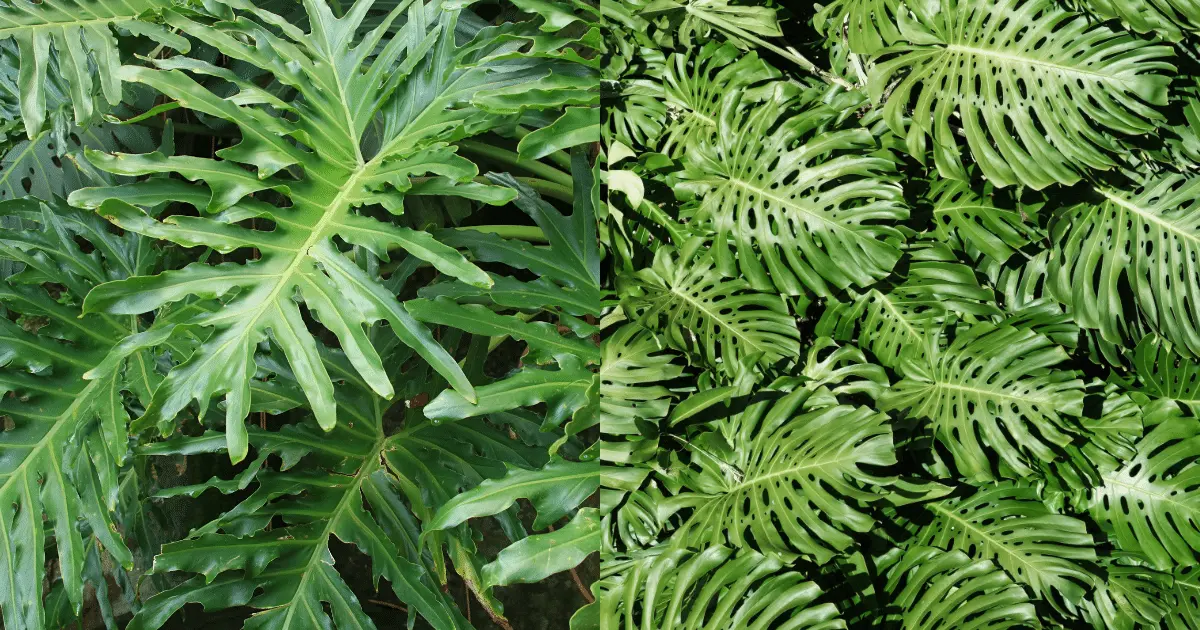Recently, I decided to add another houseplant to my collection. After going through different options, I decided to get one of these big green plants that would give my house a tropical look.

On getting to the nursery, I bought what was labeled monstera, only to get home and realize that what I had in my hands was a philodendron!
These two plants are so similar that they get mistaken for each other. What makes them so alike? What are the characteristics that can be used to differentiate them?

Telling them apart may seem quite difficult at first, but once you know what to look for in each plant, you can make your choice without making the same mistake as I did.
In this article, we will look at all the features that make them so similar and the ones you can differentiate them with.
Similarities and Differences Between Split Leaf Philodendron and Monstera

Scientific Classification
The monstera and the split-leaf philodendron have the same classification up to their family. They are both from the family Araceae.
This family is known for having plants with beautiful leaves and flowers used for gardening as indoor plants and outdoor plants in the tropics.
However, this is where they stop being related. The monstera is classified under the genus Monstera, the species Deliciosa, giving it the scientific name Monstera Deliciosa. It is famous for its fruit and large leaves, earning it this name.
The split-leaf philodendron is a plant in the genus Thaumatophyllum and species Bipinnatifidum, so its scientific name is Thaumatophyllum Bipinnatifidum. I know, it’s a mouth full to pronounce.
Sometimes, the common name split leaf philodendron is used to refer to monstera.
Origin
Both the monstera and the split-leaf philodendron are tropical plants. However, they are native to different countries and continents.
Monstera is native to North America, specifically to the tropical forests of southern Mexico to the south of Panama. It has been introduced to many low areas and has become mildly invasive in places like Hawaii and Seychelles.
Split leaf philodendron is native to South America, primarily Brazil, Bolivia, Argentina, and Paraguay. It has come to be cultivated as a landscape plant in tropical, subtropical, and climates with warm temperatures.
Size
Both plants grow to be very large at maturity.
When split-leaf philodendrons grow in their natural habitat, they can extend to a height of 15 ft and, when indoors, to a height of around 6 ft.
They also grow very fast, growing to a width of 15 ft under good growing conditions.
Monsteras are a lot larger than split-leaf philodendrons. They can grow up to 66 ft when planted outdoors, with leaves measuring about 35 inches long and 29 inches wide. However, they only measure 6 to 10 ft long when grown indoors.
This height is still a lot, although not the same as the wild type. This plant can grow up to 8 feet wide or more.
Color
Both of these plants have a simple yet beautiful deep green color.
Leaf appearance
Both plants have large heart-shaped leaves, but that is where the similarities end.
Monstera leaves have a glossy texture, and they are flat. They also have holes in them. These holes do not extend to the edge of the leaves, but they tend to increase in size and number as the plant ages.
Philodendron leaves are smaller and narrower than those of the monstera. They have a ruffled look and leathery texture.
They do not have holes but split to the edge, starting a distance from the spine of the leaf to form what looks like fingers.
Fruits and flowers.
Monsteras grow flowers that are encased and hidden in a boat-shaped spathe. These flowers eventually grow into a cluster of small berries that are edible and delicious.
If you are interested in eating this fruit, ensure it is ripe because unripe fruit can produce adverse health effects.
Split-leaf philodendrons produce small flowers, but they do not bear fruits.
Growth
Split-leaf philodendrons grow quicker than monsteras and tend to go in a horizontal direction.
They can double in height quickly and, if left to grow with no proper attention, can develop to be more expansive than tall. Because of this, it is advisable to repot them every once in a while.
Monsteras, on the other hand, grow vertically. Growing up in the wild, they usually climb tall trees to get better access to sunlight.
They also don’t grow as rapidly as split-leaf philodendrons, growing at a rate of 2 feet per year.
Toxicity
The split-leaf philodendron and the monstera may have many differences, but toxicity is not one of those. Both of them contain different toxins that can be poisonous when ingested.
The unripe fruit and other parts of the monstera plant contain oxalic acid. The split-leaf philodendron has calcium oxalate, which is dangerous to eat or even touch.
This means that you should keep your children and pets far away from both of these plants.
How to Take Care of Split Leaf Philodendron Vs. Monstera

Now that you know enough differences between the split-leaf philodendron and the monstera to determine which one you have, the next thing to know is how to care for them.
It is not difficult to take care of either one, but it is still important to know what would be best for them. Let’s quickly look at the different aspects for you to take note of.
Soil Preference
Monsteras would do well in any soil they are planted in as long as it is well-draining.
If you use a container, make sure it has a lot of holes at its bottom to improve your soil’s drainage and aeration.
Split-leaf philodendrons would also do well in rich soil with excellent drainage. However, they prefer soil with a slightly alkaline pH.
They are sensitive to changes in pH and salt buildup, and these would cause their leaves to turn yellow and fall.
To avoid this scenario, make sure you use a good-quality potting mix and rain or filtered water.
Water
Monsteras prefer the soil to dry a little before it is watered again, so you should allow the top of the ground to dry before watering.
Split-leaf philodendrons prefer moist soil, so you should water when the top is dry.
Indoor plants require less watering because the water evaporates slower than those planted outside.
Sunlight Exposure
Both the monstera and philodendron would do best in indirect sunlight. This is another similarity the plants share.
Monsteras are more susceptible to sunscald when placed in the full sun.
Use a shady spot in your yard if you are growing your plants outdoors.
Alternatively, you can protect them with a light curtain or place them close to a large window that has access to bright sunlight throughout the day if you are planting them indoors in a container.
Fertilizer
Because of their growth rate, philodendrons need more fertilizers to meet their nutritional needs. Fertilize them about once a month for the best results.
Monsteras don’t require fertilizer, but you can apply a dose once every few weeks to boost them during their growing season.
Repotting
Both plants would benefit from the occasional repotting, although one more than the other.
Because of their quick growth rate, split-leaf philodendrons must be repotted frequently. This should be done every one to two years, and you should use a container about two sizes more extensive than the former one.
Monsteras do not precisely require frequent repotting because of their slower growth rate. However, they can benefit from a moss pole or some additional support because they climb other trees out in the wild.
Pests
The monstera and the split-leaf philodendron are affected by common household pests. Make sure you keep an eye on your plant and watch for signs of infestations like yellowing or brown spots.
It is best to treat them immediately after they start to appear.
Uses of Split Leaf Philodendron Vs Monstera
- Landscaping and interior design give a place a tropical feel when added as decor.
- They are believed to purify the air.
- The fruit of the Monstera Deliciosa contains vitamin C and is very delicious.
- Monstera roots come in handy for snake bites.
I hope this article has helped explain the differences between these two lookalike plants.
